jupyterjones
57 posts
Latest Posts by jupyterjones
Depixellation? Or hallucination?
There’s an application for neural nets called “photo upsampling” which is designed to turn a very low-resolution photo into a higher-res one.
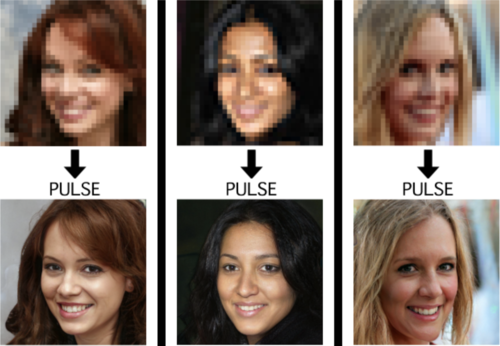
This is an image from a recent paper demonstrating one of these algorithms, called “PULSE: Self-Supervised Photo Upsampling via Latent Space Exploration of Generative Models”
It’s the neural net equivalent of shouting “enhance!” at a computer in a movie - the resulting photo is MUCH higher resolution than the original.
Could this be a privacy concern? Could someone use an algorithm like this to identify someone who’s been blurred out? Fortunately, no. The neural net can’t recover detail that doesn’t exist - all it can do is invent detail.
This becomes more obvious when you downscale a photo, give it to the neural net, and compare its upscaled version to the original.

As it turns out, there are lots of different faces that can be downscaled into that single low-res image, and the neural net’s goal is just to find one of them. Here it has found a match - why are you not satisfied?
And it’s very sensitive to the exact position of the face, as I found out in this horrifying moment below. I verified that yes, if you downscale the upscaled image on the right, you’ll get something that looks very much like the picture in the center. Stand way back from the screen and blur your eyes (basically, make your own eyes produce a lower-resolution image) and the three images below will look more and more alike. So technically the neural net did an accurate job at its task.
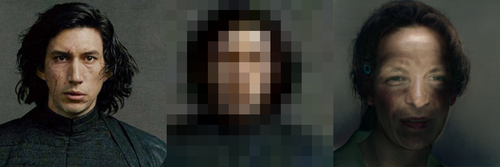
A tighter crop improves the image somewhat. Somewhat.
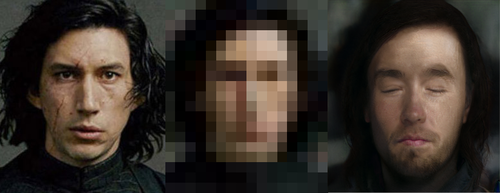
The neural net reconstructs what it’s been rewarded to see, and since it’s been trained to produce human faces, that’s what it will reconstruct. So if I were to feed it an image of a plush giraffe, for example…

Given a pixellated image of anything, it’ll invent a human face to go with it, like some kind of dystopian computer system that sees a suspect’s image everywhere. (Building an algorithm that upscales low-res images to match faces in a police database would be both a horrifying misuse of this technology and not out of character with how law enforcement currently manipulates photos to generate matches.)
However, speaking of what the neural net’s been rewarded to see - shortly after this particular neural net was released, twitter user chicken3gg posted this reconstruction:
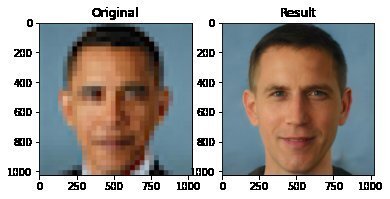
Others then did experiments of their own, and many of them, including the authors of the original paper on the algorithm, found that the PULSE algorithm had a noticeable tendency to produce white faces, even if the input image hadn’t been of a white person. As James Vincent wrote in The Verge, “It’s a startling image that illustrates the deep-rooted biases of AI research.”
Biased AIs are a well-documented phenomenon. When its task is to copy human behavior, AI will copy everything it sees, not knowing what parts it would be better not to copy. Or it can learn a skewed version of reality from its training data. Or its task might be set up in a way that rewards - or at the least doesn’t penalize - a biased outcome. Or the very existence of the task itself (like predicting “criminality”) might be the product of bias.
In this case, the AI might have been inadvertently rewarded for reconstructing white faces if its training data (Flickr-Faces-HQ) had a large enough skew toward white faces. Or, as the authors of the PULSE paper pointed out (in response to the conversation around bias), the standard benchmark that AI researchers use for comparing their accuracy at upscaling faces is based on the CelebA HQ dataset, which is 90% white. So even if an AI did a terrible job at upscaling other faces, but an excellent job at upscaling white faces, it could still technically qualify as state-of-the-art. This is definitely a problem.
A related problem is the huge lack of diversity in the field of artificial intelligence. Even an academic project with art as its main application should not have gone all the way to publication before someone noticed that it was hugely biased. Several factors are contributing to the lack of diversity in AI, including anti-Black bias. The repercussions of this striking example of bias, and of the conversations it has sparked, are still being strongly felt in a field that’s long overdue for a reckoning.
Bonus material this week: an ongoing experiment that’s making me question not only what madlibs are, but what even are sentences. Enter your email here for a preview.
My book on AI is out, and, you can now get it any of these several ways! Amazon - Barnes & Noble - Indiebound - Tattered Cover - Powell’s - Boulder Bookstore
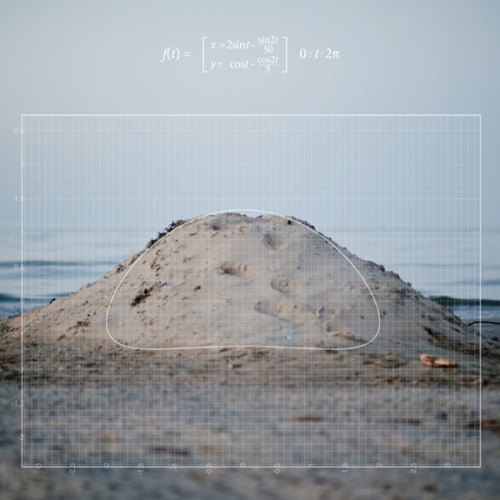
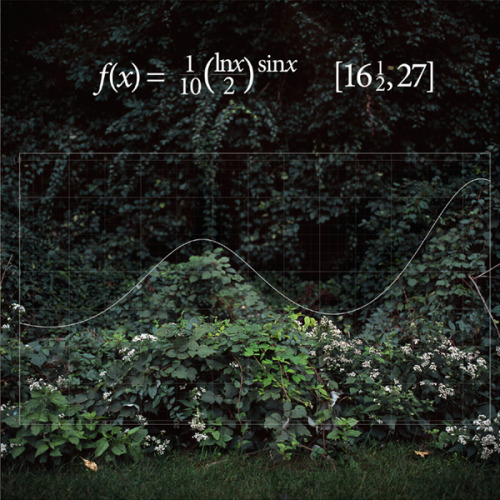
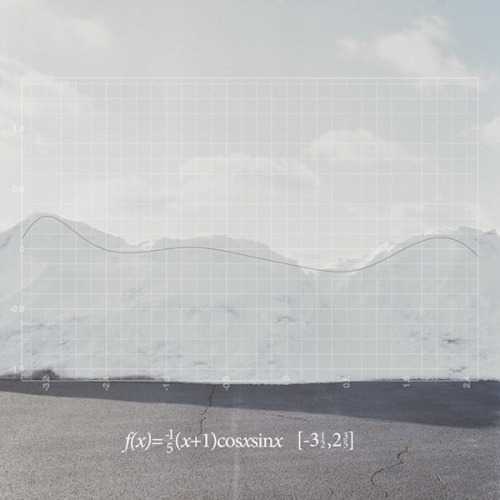

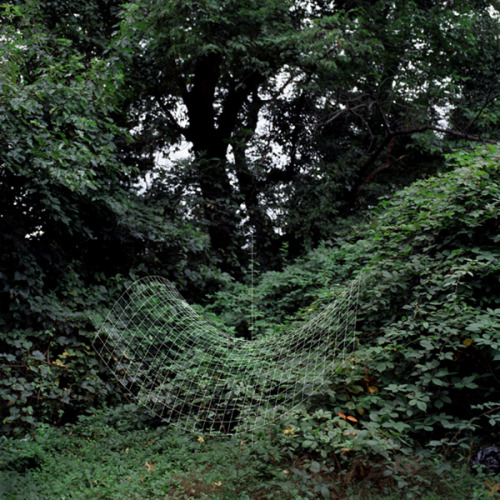



























That’s the secret of programming.
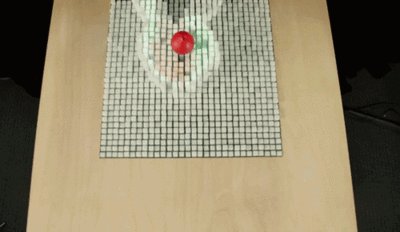
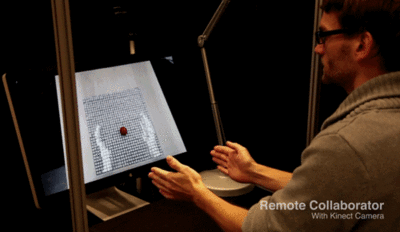
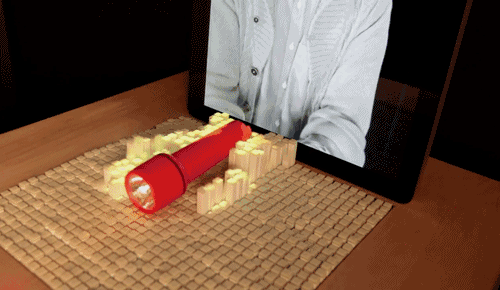
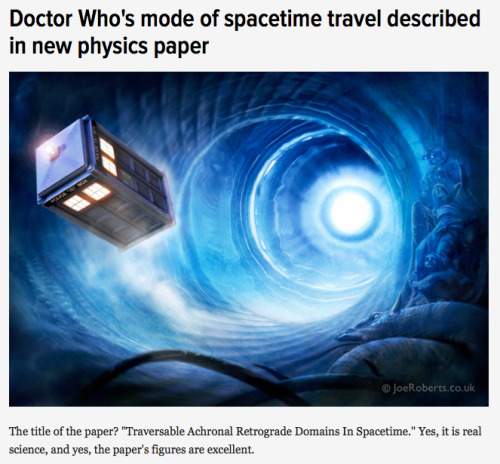
Co-authored by physicists Ben Tippett* and David Tsang (non-fictional physicists at the fictional Gallifrey Polytechnic Institute and Gallifrey Institute of Technology, respectively), the paper – which you can access free of charge over on arXiv – presents a spacetime geometry that would make retrograde time travel possible. Such a spacetime geometry, write the researchers, would emulate “what a layperson would describe as a time machine“ [x]

Jupiter’s Great Red Spot
Jupiter’s Great Red Spot (GRS) is an atmospheric storm that has been raging in Jupiter’s southern Hemisphere for at least 400 years.
About 100 years ago, the storm covered over 40,000 km of the surface. It is currently about one half of that size and seems to be shrinking.
At the present rate that it is shrinking it could become circular by 2040. The GRS rotates counter-clockwise(anti-cyclonic) and makes a full rotation every six Earth days.
It is not known exactly what causes the Great Red Spot’s reddish color. The most popular theory, which is supported by laboratory experiments, holds that the color may be caused by complex organic molecules, red phosphorus, or other sulfur compounds.
The GRS is about two to three times larger than Earth. Winds at its oval edges can reach up to 425 mph (680 km/h)
Infrared data has indicated that the Great Red Spot is colder (and thus, higher in altitude) than most of the other clouds on the planet
Sources: http://www.universetoday.com/15163/jupiters-great-red-spot/ http://www.space.com/23708-jupiter-great-red-spot-longevity.html

Planetary Frequencies.




Raspberry Multiverse
Stephen Hawking’s Grand design is leading to a non symmetric multiverse. However there is reason to suggest a full symmetric multiverse with point symmetry at the centre of a raspberry shaped pulsating bubble multiverse. For an entangled multiverse, each quantum should have its own 12 fold entanglement relation to all 12 opposite (anti) quantums, each located inside one of the 12 universes. The result is called: Poincaré dodecahedral space symmetry. (see also below: B.F.Roukema) A dodecahedron is also called “Buckyball” An other evidence for space symmetry and the centre of the multiverse is the so called DARK FLOW. Dark flow seems to be found at the edge of the visible universe!! There the “dark flow centre is represented by a so called "Pitch of spacetime”
Neutron Stars Are Even Weirder Than We Thought
Let’s face it, it’s hard for rapidly-spinning, crushed cores of dead stars NOT to be weird. But we’re only beginning to understand how truly bizarre these objects — called neutron stars — are.

Neutron stars are the collapsed remains of massive stars that exploded as supernovae. In each explosion, the outer layers of the star are ejected into their surroundings. At the same time, the core collapses, smooshing more than the mass of our Sun into a sphere about as big as the island of Manhattan.

Our Neutron star Interior Composition Explorer (NICER) telescope on the International Space Station is working to discover the nature of neutron stars by studying a specific type, called pulsars. Some recent results from NICER are showing that we might have to update how we think about pulsars!
Here are some things we think we know about neutron stars:
Pulsars are rapidly spinning neutron stars ✔︎
Pulsars get their name because they emit beams of light that we see as flashes. Those beams sweep in and out of our view as the star rotates, like the rays from a lighthouse.

Pulsars can spin ludicrously fast. The fastest known pulsar spins 43,000 times every minute. That’s as fast as blender blades! Our Sun is a bit of a slowpoke compared to that — it takes about a month to spin around once.
The beams come from the poles of their strong magnetic fields ✔︎
Pulsars also have magnetic fields, like the Earth and Sun. But like everything else with pulsars, theirs are super-strength. The magnetic field on a typical pulsar is billions to trillions of times stronger than Earth’s!

Near the magnetic poles, the pulsar’s powerful magnetic field rips charged particles from its surface. Some of these particles follow the magnetic field. They then return to strike the pulsar, heating the surface and causing some of the sweeping beams we see.
The beams come from two hot spots… ❌❓✔︎ 🤷🏽
Think of the Earth’s magnetic field — there are two poles, the North Pole and the South Pole. That’s standard for a magnetic field.

On a pulsar, the spinning magnetic field attracts charged particles to the two poles. That means there should be two hot spots, one at the pulsar’s north magnetic pole and the other at its south magnetic pole.
This is where things start to get weird. Two groups mapped a pulsar, known as J0030, using NICER data. One group found that there were two hot spots, as we might have expected. The other group, though, found that their model worked a little better with three (3!) hot spots. Not two.
… that are circular … ❌❓✔︎ 🤷🏽
The particles that cause the hot spots follow the magnetic field lines to the surface. This means they are concentrated at each of the magnetic poles. We expect the magnetic field to appear nearly the same in any direction when viewed from one of the poles. Such symmetry would produce circular hot spots.

In mapping J0030, one group found that one of the hot spots was circular, as expected. But the second spot may be a crescent. The second team found its three spots worked best as ovals.
… and lie directly across from each other on the pulsar ❌❓✔︎ 🤷🏽
Think back to Earth’s magnetic field again. The two poles are on opposite sides of the Earth from each other. When astronomers first modeled pulsar magnetic fields, they made them similar to Earth’s. That is, the magnetic poles would lie at opposite sides of the pulsar.

Since the hot spots happen where the magnetic poles cross the surface of the pulsar, we would expect the beams of light to come from opposite sides of the pulsar.

But, when those groups mapped J0030, they found another surprising characteristic of the spots. All of the hot spots appear in the southern half of the pulsar, whether there were two or three of them.

This also means that the pulsar’s magnetic field is more complicated than our initial models!
J0030 is the first pulsar where we’ve mapped details of the heated regions on its surface. Will others have similarly bizarre-looking hotspots? Will they bring even more surprises? We’ll have to stay tuned to NICER find out!
And check out the video below for more about how this measurement was done.
Make sure to follow us on Tumblr for your regular dose of space: http://nasa.tumblr.com.
We Need Your Help to Find STEVE
Glowing in mostly purple and green colors, a newly discovered celestial phenomenon is sparking the interest of scientists, photographers and astronauts. The display was initially discovered by a group of citizen scientists who took pictures of the unusual lights and playfully named them “Steve.”
When scientists got involved and learned more about these purples and greens, they wanted to keep the name as an homage to its initial name and citizen science discoverers. Now it is STEVE, short for Strong Thermal Emission Velocity Enhancement.

Credit: ©Megan Hoffman
STEVE occurs closer to the equator than where most aurora appear – for example, Southern Canada – in areas known as the sub-auroral zone. Because auroral activity in this zone is not well researched, studying STEVE will help scientists learn about the chemical and physical processes going on there. This helps us paint a better picture of how Earth’s magnetic fields function and interact with charged particles in space. Ultimately, scientists can use this information to better understand the space weather near Earth, which can interfere with satellites and communications signals.

Want to become a citizen scientist and help us learn more about STEVE? You can submit your photos to a citizen science project called Aurorasaurus, funded by NASA and the National Science Foundation. Aurorasaurus tracks appearances of auroras – and now STEVE – around the world through reports and photographs submitted via a mobile app and on aurorasaurus.org.
Here are six tips from what we have learned so far to help you spot STEVE:
1. STEVE is a very narrow arc, aligned East-West, and extends for hundreds or thousands of miles.

Credit: ©Megan Hoffman
2. STEVE mostly emits light in purple hues. Sometimes the phenomenon is accompanied by a short-lived, rapidly evolving green picket fence structure (example below).

Credit: ©Megan Hoffman
3. STEVE can last 20 minutes to an hour.
4. STEVE appears closer to the equator than where normal – often green – auroras appear. It appears approximately 5-10° further south in the Northern hemisphere. This means it could appear overhead at latitudes similar to Calgary, Canada. The phenomenon has been reported from the United Kingdom, Canada, Alaska, northern US states, and New Zealand.

5. STEVE has only been spotted so far in the presence of an aurora (but auroras often occur without STEVE). Scientists are investigating to learn more about how the two phenomena are connected.
6. STEVE may only appear in certain seasons. It was not observed from October 2016 to February 2017. It also was not seen from October 2017 to February 2018.

Credit: ©Megan Hoffman
STEVE (and aurora) sightings can be reported at www.aurorasaurus.org or with the Aurorasaurus free mobile apps on Android and iOS. Anyone can sign up, receive alerts, and submit reports for free.
Make sure to follow us on Tumblr for your regular dose of space: http://nasa.tumblr.com.
Eclipse Across America
August 21, 2017, the United States experienced a solar eclipse!

An eclipse occurs when the Moon temporarily blocks the light from the Sun. Within the narrow, 60- to 70-mile-wide band stretching from Oregon to South Carolina called the path of totality, the Moon completely blocked out the Sun’s face; elsewhere in North America, the Moon covered only a part of the star, leaving a crescent-shaped Sun visible in the sky.

During this exciting event, we were collecting your images and reactions online.
Here are a few images of this celestial event…take a look:

This composite image, made from 4 frames, shows the International Space Station, with a crew of six onboard, as it transits the Sun at roughly five miles per second during a partial solar eclipse from, Northern Cascades National Park in Washington. Onboard as part of Expedition 52 are: NASA astronauts Peggy Whitson, Jack Fischer, and Randy Bresnik; Russian cosmonauts Fyodor Yurchikhin and Sergey Ryazanskiy; and ESA (European Space Agency) astronaut Paolo Nespoli.
Credit: NASA/Bill Ingalls

The Bailey’s Beads effect is seen as the moon makes its final move over the sun during the total solar eclipse on Monday, August 21, 2017 above Madras, Oregon.
Credit: NASA/Aubrey Gemignani

This image from one of our Twitter followers shows the eclipse through tree leaves as crescent shaped shadows from Seattle, WA.
Credit: Logan Johnson

“The eclipse in the palm of my hand”. The eclipse is seen here through an indirect method, known as a pinhole projector, by one of our followers on social media from Arlington, TX.
Credit: Mark Schnyder

Through the lens on a pair of solar filter glasses, a social media follower captures the partial eclipse from Norridgewock, ME.
Credit: Mikayla Chase

While most of us watched the eclipse from Earth, six humans had the opportunity to view the event from 250 miles above on the International Space Station. European Space Agency (ESA) astronaut Paolo Nespoli captured this image of the Moon’s shadow crossing America.
Credit: Paolo Nespoli

This composite image shows the progression of a partial solar eclipse over Ross Lake, in Northern Cascades National Park, Washington. The beautiful series of the partially eclipsed sun shows the full spectrum of the event.
Credit: NASA/Bill Ingalls
In this video captured at 1,500 frames per second with a high-speed camera, the International Space Station, with a crew of six onboard, is seen in silhouette as it transits the sun at roughly five miles per second during a partial solar eclipse, Monday, Aug. 21, 2017 near Banner, Wyoming.
Credit: NASA/Joel Kowsky
To see more images from our NASA photographers, visit: https://www.flickr.com/photos/nasahqphoto/albums/72157685363271303
Make sure to follow us on Tumblr for your regular dose of space: http://nasa.tumblr.com
When 25,000 little dice are agitated in a cylinder, they form into neat concentric circles

Behold the magic of compaction dynamics. Scientists from Mexico and Spain dumped 25,000 tiny dice (0.2 inches) into a large clear plastic cylinder and rotated the cylinder back and forth once a second. The dice arranged themselves into rows of concentric circles. See the paper and the videos here.
https://boingboing.net/2017/12/05/when-25000-little-dice-are-ag.html
The Kakeya Problem
Some time ago I (briefly) mentioned that, along with two other students, I was taking a reading course this semester with Dmitriy Bilyk. It hasn’t quite gone in the direction we were initially expecting, but one of our long detours has been an extended sequence of readings around the the Kakeya conjecture. As far as I know, the Kakeya problem (different from the Kakeya conjecture; more on that later) was the first question that fell respectably under the purview of geometric measure theory. So if nothing else, it is interesting from a historical perspective as a question that kickstarted a whole new field of mathematics.
Okay, but what is the Kakeya problem?
As originally posed, it goes like this: given a disk with diameter 1, it is possible to place down a line segment of length 1 into the set, and rotate it (continuously) an entire 180 degrees. But this is not the smallest-area set for which this kind of rotation is possible:

(all pictures in the post are from the Wikipedia page, which is really good)
This set has area $\tau/16$, half that of the circle. So the question naturally becomes: what is the area of the smallest set that allows this kind of rotation?
The answer is known, and it is…
…
zero, basically.
It’s remarkable, but it’s true: you can construct arbitrarily small sets in which you can perform a 180-degree rotation of a line segment! One way to do it goes like this: in the picture above, we reduced the area of the circle by squeezing it until it developed three points. If we keep squeezing to get more points, then the solid “middle” becomes very small, and the tendrils get very thin, so the area keeps decreasing. However, we can still take a line segment and slowly, methodically, shift it back and forth between the set’s pointy bits, parallel-parking style, to eventually get the entire 180 degrees of rotation.
——
You can’t actually get a set with zero area to work. But the reason for that seemed more like a technicality than something actually substantial. So people changed the problem slightly to get rid of those concerns. Now, instead of trying to get a set where you can rotate a line segment through all 180 degrees, you just have to have a set where you can find a line segment in every direction. The difference being that you don’t need to guarantee any smooth way to “move between” these line segments.
Sets that work for the modified problem are often called Kakeya sets (although some people reserve that for the rotation problem and use Besicovitch sets for the modified one). And indeed, there are Kakeya sets which actually have zero area.
The details involved with going from “arbitrarily small” to “actually zero” are considerable, and we won’t get into them here. The following is a simplification (due to Perron) of Besicovitch’s original construction for the “arbitrarily small” case. We take a triangle which clearly has ½ of the directions the needle might possibly take, and split it up into several pieces in such a way that no directions are lost. Then we start to overlap those pieces to get a set (that still has segments in all the same directions) with much smaller area:

We can do this type of construction twice (one triangle “downward-facing” and the other “left-facing”) and then put those two sets together, guarantee that we get all of 180 degrees of directions.
This Besicovitch-Perron construction, itself, only produces sets which are “arbitrarily small”, but was later refined to go all the way to zero. Again, the technicalities involved in closing that gap are (much) more than I want to talk about now. But the fact that these technicalities can be carried out with the Besicovitch-Perron construction is what makes it “better” than the usual constructions for the original Kakeya problem.
——
I should conclude with a few words about the Kakeya conjecture, since I promised them earlier :)
Despite the essentially-solved status of these two classical Kakeya problems, there is at least one big question still left open. It is rather more technical than the original ones, and so doesn’t get a lot of same attention, but I’d like to take a stab at explaining what’s still current research in this sphere of ideas.
Despite the fact that Kakeya sets can be made to be “small” in the sense of measure, we still intuitively want to believe these sets are “big”. There are many ways we can formalize largeness of sets (in $\Bbb R^n$, in particular) but the one that seems to be most interesting for Kakeya things is the notion of Hausdorff dimension. I won’t define the term here, but if you’ve ever heard someone spouting off about fractals, you’ve probably heard the phrase “Fractals have non-integer dimension!”. This is the notion of dimension they’re talking about.
It is known that Kakeya sets in the plane have Hausdorff dimension 2, and that in general a Kakeya set in $n>2$ dimensions has Hausdorff dimension at least $\frac{n}{2}+1$. The proofs of these statements are… difficult, and the general case remains elusive.
One thing more: you can also formulate the Kakeya conjecture in finite fields: in this setting having “dimension $n$” in a vector space over the field $\Bbb F_q$ means that you have a constant times $q^n$ number of points in your set. Wolff proposed this “technicality-free” version in 1999 as a way to study the conjecture for $\Bbb R$. And indeed, a lot of the best ideas for the problem in $\Bbb R$ have come from doing some harmonic analysis on the ideas originally generated for the finite field case.
But then in 2008 Zeev Dvir went and solved the finite field case completely. Which on one hand is great! But on the other hand, Dvir’s method definitely can’t be finessed to work in $\Bbb R$ so we still have work to do :P
——
Partially I wanted to write about this because it’s cool in its own right, but I must admit that my main motivation is a little more pragmatic. There was a talk at SEICCGTC 2017 which showed a surprising connection between the Kakeya problem and a certain combinatorial game. So if you think these ideas are at all interesting, you may enjoy reading the next two posts in this sequence about that talk.
[ Post 1 ] [ Next ]
Note to self: debugging
always remember to remove the Log.d(”Well fuck you too”) lines and the variables named “wtf” and “whhhyyyyyyy” before pushing anything to git
New Research Heading to Earth’s Orbiting Laboratory
It’s a bird! It’s a plane! It’s a…dragon? A SpaceX Dragon spacecraft is set to launch into orbit atop the Falcon 9 rocket toward the International Space Station for its 12th commercial resupply (CRS-12) mission August 14 from our Kennedy Space Center in Florida.

It won’t breathe fire, but it will carry science that studies cosmic rays, protein crystal growth, bioengineered lung tissue.

Here are some highlights of research that will be delivered:
I scream, you scream, we all scream for ISS-CREAM!
Cosmic Rays, Energetics and Mass, that is! Cosmic rays reach Earth from far outside the solar system with energies well beyond what man-made accelerators can achieve. The Cosmic Ray Energetics and Mass (ISS-CREAM) instrument measures the charges of cosmic rays ranging from hydrogen to iron nuclei. Cosmic rays are pieces of atoms that move through space at nearly the speed of light

The data collected from the instrument will help address fundamental science questions such as:
Do supernovae supply the bulk of cosmic rays?
What is the history of cosmic rays in the galaxy?
Can the energy spectra of cosmic rays result from a single mechanism?
ISS-CREAM’s three-year mission will help the scientific community to build a stronger understanding of the fundamental structure of the universe.
Space-grown crystals aid in understanding of Parkinson’s disease
The microgravity environment of the space station allows protein crystals to grow larger and in more perfect shapes than earth-grown crystals, allowing them to be better analyzed on Earth.

Developed by the Michael J. Fox Foundation, Anatrace and Com-Pac International, the Crystallization of Leucine-rich repeat kinase 2 (LRRK2) under Microgravity Conditions (CASIS PCG 7) investigation will utilize the orbiting laboratory’s microgravity environment to grow larger versions of this important protein, implicated in Parkinson’s disease.

Defining the exact shape and morphology of LRRK2 would help scientists to better understand the pathology of Parkinson’s and could aid in the development of therapies against this target.
Mice Help Us Keep an Eye on Long-term Health Impacts of Spaceflight
Our eyes have a whole network of blood vessels, like the ones in the image below, in the retina—the back part of the eye that transforms light into information for your brain. We are sending mice to the space station (RR-9) to study how the fluids that move through these vessels shift their flow in microgravity, which can lead to impaired vision in astronauts.

By looking at how spaceflight affects not only the eyes, but other parts of the body such as joints, like hips and knees, in mice over a short period of time, we can develop countermeasures to protect astronauts over longer periods of space exploration, and help humans with visual impairments or arthritis on Earth.
Telescope-hosting nanosatellite tests new concept
The Kestrel Eye (NanoRacks-KE IIM) investigation is a microsatellite carrying an optical imaging system payload, including an off-the-shelf telescope. This investigation validates the concept of using microsatellites in low-Earth orbit to support critical operations, such as providing lower-cost Earth imagery in time-sensitive situations, such as tracking severe weather and detecting natural disasters.

Sponsored by the ISS National Laboratory, the overall mission goal for this investigation is to demonstrate that small satellites are viable platforms for providing critical path support to operations and hosting advanced payloads.
Growth of lung tissue in space could provide information about diseases
The Effect of Microgravity on Stem Cell Mediated Recellularization (Lung Tissue) uses the microgravity environment of space to test strategies for growing new lung tissue. The cells are grown in a specialized framework that supplies them with critical growth factors so that scientists can observe how gravity affects growth and specialization as cells become new lung tissue.

The goal of this investigation is to produce bioengineered human lung tissue that can be used as a predictive model of human responses allowing for the study of lung development, lung physiology or disease pathology.
These crazy-cool investigations and others launching aboard the next SpaceX #Dragon cargo spacecraft on August 14. They will join many other investigations currently happening aboard the space station. Follow @ISS_Research on Twitter for more information about the science happening on 250 miles above Earth on the space station.
Watch the launch live HERE starting at 12:20 p.m. EDT on Monday, Aug. 14!
Make sure to follow us on Tumblr for your regular dose of space: http://nasa.tumblr.com


What’s encrypting your internet surfing? An algorithm created by a supercomputer? Well, if the site you’re visiting is encrypted by the cyber security firm Cloudflare, your activity may be protected by a wall of lava lamps.

Cloudflare covers websites for Uber, OKCupid, & FitBit, for instance. The wall of lamps in the San Francisco headquarters generates a random code. Over 100 lamps, in a variety of colors, and their patterns deter hackers from accessing data.

As the lava lamps bubble and swirl, a video camera on the ceiling monitors their unpredictable changes and connects the footage to a computer, which converts the randomness into a virtually unhackable code.

Codes created by machines have relatively predictable patterns, so it’s possible for hackers to guess their algorithms, posing a security risk. Lava lamps, add to the equation the sheer randomness of the physical world, making it nearly impossible for hackers to break through.

You might think that this would be kept secret, but it’s not. Simply go in and ask to see the lava lamp display. By allowing people to affect the video footage, human movement, static, and changes in lighting from the windows work together to make the random code even harder to predict.

So, by standing in front of the display, you add an additional variable to the code, making it even harder to hack. Isn’t that interesting?
via atlasobscura.com

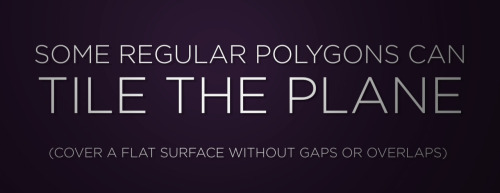





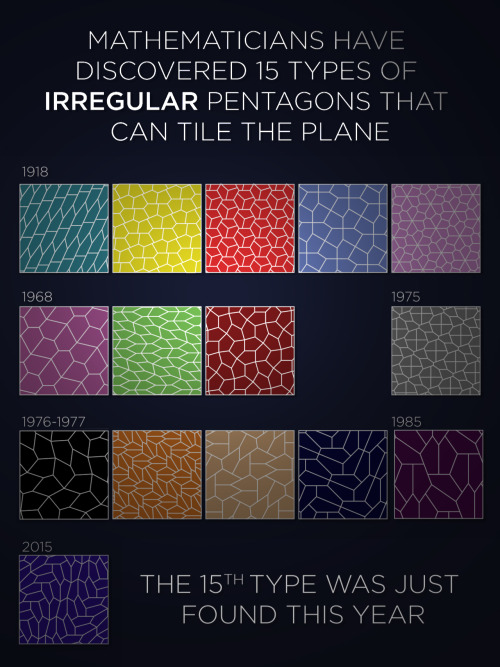

Big math news! It’s been thirty years since mathematicians last found a convex pentagon that could “tile the plane.” The latest discovery (by Jennifer McLoud-Mann, Casey Mann, and David Von Derau) was published earlier this month. Full story.



Speaking of pretty flowers, may I present to you the “Eighteen Scholars”, the flower of my heart-a variation of Camellia japonica L. Its uniqueness lies in the layers and layers of petals-one flower can hold as much as 130 petals.
Named “Eighteen Scholars” in Chinese because at the most, one bush can have up to eighteen of these pretty darlings :3
I got a migraine and threw up because of this
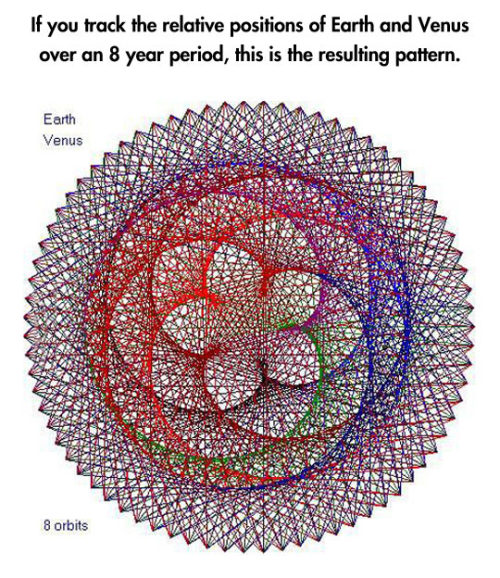
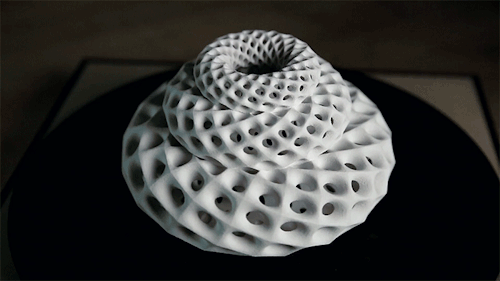


Fibonacci Sculptures - Part II
These are 3-D printed sculptures designed to animate when spun under a strobe light. The placement of the appendages is determined by the same method nature uses in pinecones and sunflowers. The rotation speed is synchronized to the strobe so that one flash occurs every time the sculpture turns 137.5º—the golden angle. If you count the number of spirals on any of these sculptures you will find that they are always Fibonacci numbers.
© John Edmark

Six stages of debugging

Programmer LoGiC

Weirdly anti-millennial articles have scraped the bottom of the barrel so hard that they are now two feet down into the topsoil
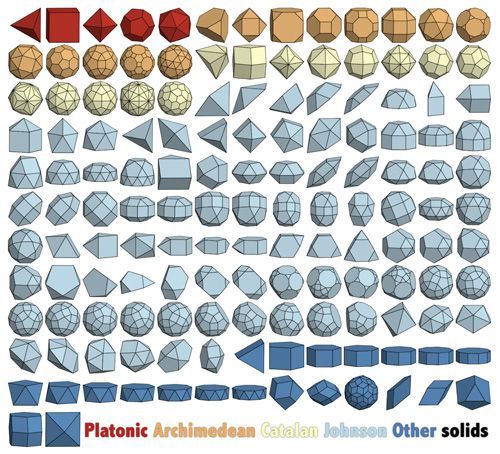
gotta catch em all